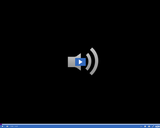
Track 4, Stories from the soundtrack to the musical, Spike 150: As One
- Subject:
- Arts and Humanities
- History
- Music
- Social Science
- Society and Culture
- Provider:
- Utah Education Network
- Date Added:
- 09/24/2019

Track 4, Stories from the soundtrack to the musical, Spike 150: As One
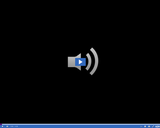
The title track to the soundtrack for the musical, Spike 150: As One.
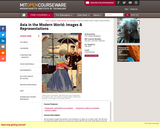
We will explore images that pertain to the emergence of Japan as a modern state. We will focus on images that depict Japan as it comes into contact with the rest of the world after its long and deep isolation during the feudal period. We will also cover city planning of Tokyo that took place after WWII, and such topics as the 1964 Tokyo Olympics.
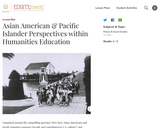
Organized around the compelling question "How have Asian Americans and Pacific Islanders engaged civically and contributed to U.S. culture?" and grounded in inquiry-based teaching and learning, this lesson brings history, civics, and the arts together to learn about the experiences and perspectives of Asian Americans and Pacific Islanders (AAPI) in U.S. history. elementary sources, literature, and works of art created by AAPI individuals and related organizations provide an historical as well as contemporary context for concepts and issues including civic participation, immigration, and culture.
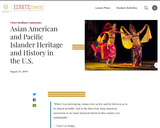
The month of May is an opportunity for reflection on and commemoration of all that AAPI individuals and organizations have accomplished and contributed to U.S. history and culture. This piece highlights NEH projects and classroom resources for teaching about these experiences in America.

This activity is designed to accompany the contextual essay “Assembling, Amplifying, and Ascending: Recent Trends Among Women in Congress, 1977–2006,” from the Women in Congress website, history.house. gov/exhibition-and-publications/wic/women-in-congress/. Students have the opportunity to learn more about the women who served in Congress from 1977 to 2006. Students are encouraged to analyze the role women Representatives and Senators played in Congress during this era, as well as the ways in which they may have changed the institution.

Slavery has occurred in many forms throughout the world, but the Atlantic slave trade -- which forcibly brought more than 10 million Africans to the Americas -- stands out for both its global scale and its lasting legacy. Anthony Hazard discusses the historical, economic and personal impact of this massive historical injustice. Has questions for comprehension and discussion
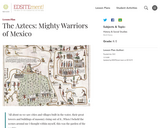
The Aztec capital of Tenochtitlan was the hub of a rich civilization that dominated the region of modern-day Mexico at the time the Spanish forces arrived. In this lesson, students will learn about the history and culture of the Aztecs and discover why their civilization came to an abrupt end.

Ever since there have been babies, there has been a need to carry those babies. The cradleboard is art meets science and function for parents and children. This unique design was made for easy transport and care of a child.
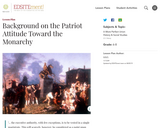
Understanding the Patriot attitude toward the British monarchy is helpful in understanding the Founders' reluctance to have a strong executive under the Articles of Confederation as well as their desire to build in checks of executive power under the Constitution.

In this lesson, students learn about President Obama’s life, family, and political career as they interact with a slide presentation. Access to this resource requires a free educator login.
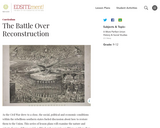
This curriculum unit of three lessons examines the social, political and economic conditions of the southern states in the aftermath of the Civil War and shows how these factors helped to shape the Reconstruction debate as well as the subsequent history of American race relations.

What really happened at the Battle of Lexington? In this lesson, students practice sourcing, corroboration, and contextualization as they weigh competing accounts of who fired the first shots of the Revolutionary War.

This lesson plan is designed to help 5th grade students explore the events and effects of the Battle of Bunker Hill during the American Revolutionary War through research of informational text, video presentation and pictures, with the ultimate goal of understanding the effect of the battle on the war. The lesson is best delivered in an in person whole group setting, but could be modified to be used in an online format. Time Frame: 45 - 60 minutesPhoto by Melanie Nixon

In this lesson students will discuss what the necessary and proper clause means to them. They will also put themselves into the shoes of citizens in 1791 and look at Alexander Hamilton’s and Thomas Jefferson’s opinions on the national bank. Students will also learn about the war debt and currency issues so as to better understand the national bank debate. This lesson may be used in an American history class or civics classes as it will allow students to analyze and use primary sources as part of a continuation in developing their social studies skills.
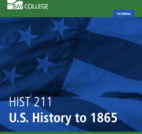
Online OER text created for U.S. History to 1865 by Dr. June Klees for Bay College.
© 2017 Bay College and Content Creators. Except where otherwise noted this work is licensed under the Creative Commons Attribution 4.0 International License. To view a copy of this license, visit http://creativecommons.org/licenses/by/4.0/.
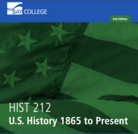
Online OER text created for U.S. History 1865 to Present by Dr. June Klees for Bay College.
© 2017 Bay College and Content Creators. Except where otherwise noted this work is licensed under the Creative Commons Attribution 4.0 International License. To view a copy of this license, visit http://creativecommons.org/licenses/by/4.0/.

This audio excerpt captures the beginning of Bayard Rustin's 1967 "Freedom Budget" speech, describing the social and economic impact of racism over time.
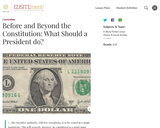
In this curriculum unit, students look at the role of President as defined in the Constitution and consider the precedent-setting accomplishments of George Washington.

This activity asks students to review online materials related to the Berlin Airlift and to investigate the site to complete their activities.